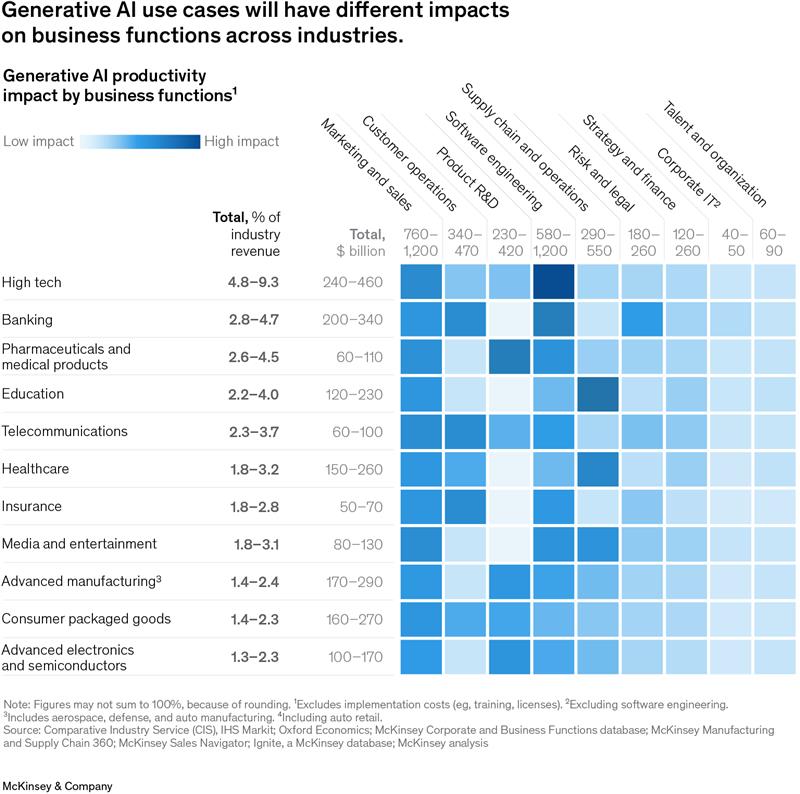In 2025, Salesforce remains the cornerstone of digital transformation, allowing businesses to automate marketing, manage customer relationships, and boost operational effectiveness. Salesforce deployment alone, however, is insufficient. Organisations must comprehend, monitor, and maximise the appropriate performance metrics in order to obtain a competitive advantage.
Including the best metrics to monitor, operational improvement best practices, real-world industry examples, and how MetroMax Solutions assists companies in obtaining quantifiable return on investment from the Salesforce ecosystem, this blog offers a clear road map for navigating the constantly changing Salesforce performance landscape.
The Salesforce Performance Metrics Landscape In 2025
Salesforce is becoming more and more influential across industries, and how businesses assess its performance is evolving quickly. Contemporary companies are concentrating on strategic, data-supported metrics rather than superficial insights.
Key takeaways:
- Salesforce CRM has been the top CRM platform in the world for more than ten years, with a global market share (IDC) of over 21%.
- Campaign metrics and adoption rates are no longer the only performance metrics in 2025; cross-channel attribution accuracy, marketing automation maturity, and AI agent efficiency are now included.
- Salesforce Marketing Cloud (SFMC) benchmarks:
a. Email Open Rates (B2C Average): 20–25%
b. CTRs (Click-through rates): 2–5%
c. Mobile Open Rates: The necessity of mobile-first marketing is highlighted by mobile open rates, which surpass 42%.
Key Salesforce KPIs To Monitor In 2025
Businesses can assess the success of their marketing, sales, and customer service strategies by monitoring the appropriate Salesforce KPIs. Across departments, these metrics promote quantifiable improvements and well-informed decision-making.
Automation & AI Metrics
a. AI Agent Deflection Rate: The number of customer inquiries that are handled without the need for human assistance is measured by the AI agent deflection rate. Effective AI integration is indicated by a higher rate.
b. Model Accuracy And Fallback Frequency: Monitors the accuracy of machine learning forecasts and the frequency of times that human intervention is necessary.
c. Workflow Automation Success Rate: Evaluates the dependability of automated triggers and journeys within SFMC.
Engagement Metrics & Email Marketing
a. Open Rate: Indicates audience targeting and the efficacy of the email subject line.
b. Click-through Rate (CTR): CTR is a measure of the relevance and level of engagement of content.
c. Conversion Rate (CVR): The percentage of users who complete a desired action, like making a purchase or submitting a form, is known as the conversion rate, or CVR.
d. Revenue Per Email (RPE): Assists in calculating each campaign’s return on investment and directs the distribution of resources.
e. Deliverability And Bounce Rate: Monitors email delivery problems that could affect a sender’s engagement and reputation.
DevOps And Deployment Health
a. Deployment Frequency: The frequency at which updates are pushed into production is reflected in the health deployment frequency. Agile processes are frequently indicated by more frequent deployments.
b. Success Rate: Indicates the number of deployments that are finished without mistakes or rollbacks.
c. Mean Time To Recovery (MTTR): Measures the speed at which a service interruption or failed deployment is fixed.
d. Test Coverage: Test coverage is a crucial quality metric for stable deployments that quantifies the proportion of code or metadata that is subjected to automated testing.
Attribution And Data Metrics
a. Time-to-insight: Measures the amount of time between the start of a campaign and useful reporting.
b. Accuracy Of Multi-channel Attribution: Indicates how well SFMC gives each marketing touchpoint credit, which aids in journey optimisation.
c. Data Freshness And Completeness: Guarantees that decisions are founded on current and comprehensive customer records from all systems.
Business Impact Metrics
a. Cost Per Acquisition (CPA): Calculates the effectiveness of marketing by dividing the cost of a campaign by the quantity of new leads or clients.
b. Marketing-attributed Revenue: Indicates the amount of revenue that Salesforce campaigns have a direct or indirect impact on.
c. Campaign Time-to-market: Measures the amount of time needed to plan, develop, and implement a campaign with Salesforce tools.
Organisations can obtain a thorough understanding of both technical and commercial performance by coordinating these metrics with business objectives.
Best Practices For Improving Salesforce Performance
In 2025, success with Salesforce will depend on what you do as much as the measurements you make. In order to achieve continuous improvement, these best practices align people, technology, and processes.
Audit Salesforce Performance
- Examine your DevOps, SFMC, and CRM setups.
- Determine where automation, attribution, and AI readiness are lacking.
- Examine stakeholder access to key KPIs and dashboard visibility.
Establish KPI Frameworks In Line With Business Results
- Give the IT, marketing, and sales teams precise, role-specific metrics.
- Pay attention to email CTR, RPE, and CPA for marketing.
- For IT/DevOps, keep an eye on test coverage and deployment success rate.
- Business units must prioritise customer engagement, retention, and revenue attribution.
Enable CI/CD And DevOps Pipelines
- Implement automated testing, release automation, and metadata version control.
- Make use of monitoring tools for failure diagnostics and deployment analytics.
- Without sacrificing stability, raise the release velocity and decrease the MTTR.
Utilize Salesforce Data Cloud + MCI To Centralize Reporting.
- Create unified dashboards by integrating offline sources, third-party data, and Salesforce.
- Use real-time dashboards to monitor metrics such as customer lifetime value and campaign ROI.
- To facilitate cooperative decision-making, departments should share dynamic viewpoints.
Begin Small With AI And Grow Strategically
- Use AI tools like Automated Case Routing and Einstein Lead Scoring.
- Use engagement scores and deflection rates to track efficacy.
- Only scale AI projects after they have been statistically verified by metrics.
Adopt A Responsive, Mobile-First Campaign Design
- Because mobile engagement is increasing, make sure all marketing materials are mobile-friendly.
- In SFMC, make use of dynamic content blocks and adaptive templates.
- A/B test subject lines, send times, and layouts tailored to mobile devices.
Businesses can now convert unstructured data into useful performance strategies by implementing these Salesforce best practices.
Use Cases And Success Stories From Leading Industries
Here are some examples of how performance metrics have been applied to actual business situations and explained industry-wise.
Retail
Einstein’s recommendations were incorporated into the email marketing strategy of a multinational retail brand. In a quarter, they were able to witness:
- Email click-through rates increased by 35%.
- Seasonal sales increased by 4% year over year.
- Better segmentation using behavioural data
Healthcare
SFMC was utilised by a U.S.-based provider to improve patient engagement by sending tailored, HIPAA-compliant messages. The outcomes:
- Opt-in rates increased from 17% to 24%.
- Email bounce rates decreased by 25%.
- Centralised dashboards were used to monitor compliance metrics.
Fintech
A financial technology company automated 2FA alerts and onboarding emails by integrating SFMC with its internal verification system. They observed:
- 20% more new users are being activated.
- 50% fewer calls to the support centre.
- Predictive model-based enhanced agent routing.
Logistics
DevOps and automated release pipelines in Salesforce were implemented by a multinational freight company. This resulted in:
- Recovery time following deployment problems is cut by 80%.
- Daily deployment capacity without interfering with business.
- Improved customer satisfaction through quicker delivery updates.
The concrete benefits of monitoring and enhancing Salesforce KPIs across industries are demonstrated by these use cases.
Building A Salesforce Metrics Strategy For 2025 And Beyond
In 2025, organisations must embrace a metrics-first strategy that promotes scalability, agility, and business alignment to stay competitive and scale.
Blueprint for strategy:
- Examine Your Existing Architecture: Recognise the metrics being monitored, the locations of the data, and the decision-making process.
- Clearly Define Your KPI Priorities: Pay attention to metrics that have a direct correlation with revenue, customer satisfaction, or operational effectiveness.
- Test And Iterate: Launch pilot projects that are metric-focused and have well-defined measurement baselines.
- Control And Scale: Successful procedures should be documented and replicated in other departments or areas.
- Consistently Visualise Results: To keep teams and executives informed about progress, use real-time dashboards.
This methodical approach guarantees that growth, not just system usage, is linked to performance.
How MetroMax Solutions Helps You Accelerate Salesforce Performance
MetroMax Solutions offers customised development, automation, and performance management services that help businesses harness Salesforce’s full potential.
Our core capabilities:
1. Salesforce DevOps Enablement
CI/CD pipeline implementation.
Over 95% of deployments are successful.
Rollback protection and quicker, safer releases.
2. Cloud Optimisation for Marketing
Customised journey planning and execution.
A/B testing for forms, landing pages, and emails.
Measurable increases in conversion and open rates.
3. Cross-Platform Attribution And Reporting
Combining Tableau, MCI, and Salesforce Data Cloud.
Dashboards that are unified and link customer, marketing, and sales data.
Enhanced insight into performance at each funnel stage.
4. Support For Worldwide Delivery
Cost-effective hybrid onshore-offshore model.
Industry-wide solutions that are ready for compliance.
Support for scalable Salesforce environments around the clock.
5. Strategy For AI And Automation
Workflow automation and Einstein GPT integration.
Validation of use cases using KPI tracking.
Plans for long-term, sustainable growth in AI.
Performance, flexibility, and quantifiable return on investment are given top priority in MetroMax’s Salesforce solutions.
Final Thoughts
In a highly competitive, data-driven business environment, businesses must transition from platform adoption to performance mastery to stay ahead. In 2025, Salesforce is evolving from a CRM to a quantifiable force behind growth, engagement, and operational success.
Organisations can gain insights that have a direct impact on customer satisfaction and profitability by monitoring important Salesforce metrics like AI agent performance, campaign ROI, email engagement rates, and deployment efficiency.
Businesses can transform Salesforce from a system of records into a system of results by implementing sustainable performance practices with the help of strategic frameworks and knowledgeable partners like MetroMax Solutions.





